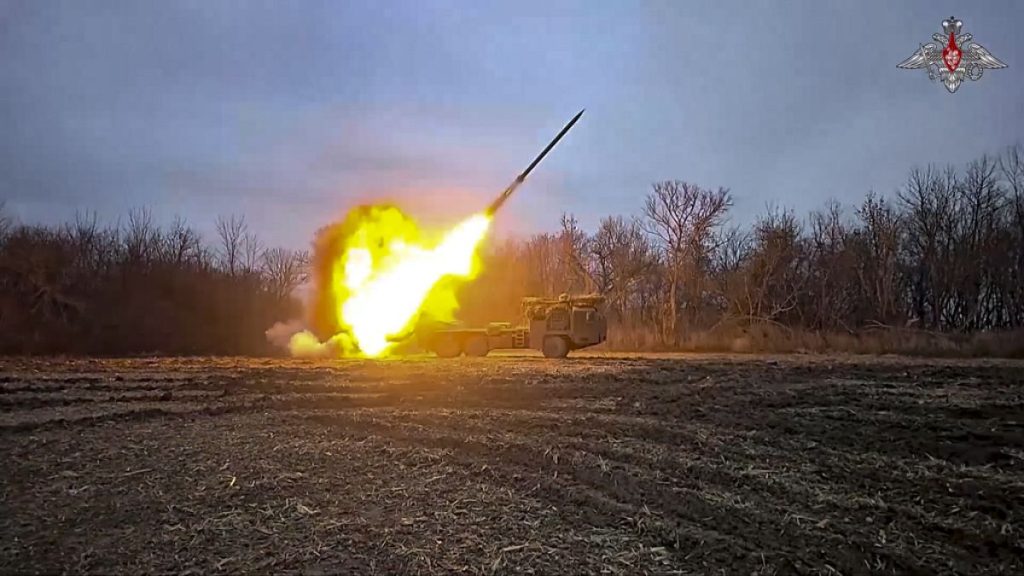Ongoing Conflict and Casualties in Ukraine
The conflict between Russia and Ukraine continues to escalate, resulting in civilian casualties and widespread destruction. On Saturday morning, the city of Kherson, located in southern Ukraine, came under fire from Russian forces. Local media reported that three civilians, including a child, were injured in the shelling. The head of Kherson’s Military Administration confirmed that several residential buildings were damaged, with one catching fire. This incident highlights the ongoing threats to civilian lives in occupied and contested regions of Ukraine.
Meanwhile, in the eastern Donetsk region, which is partially under Russian occupation, a Ukrainian strike on the town of Makiivka resulted in casualties. According to officials installed by Russia, one person was killed, and ten others were wounded in the attack. These incidents underscore the human cost of the war, as both sides continue to exchange fire in densely populated areas.
Drone Attacks and Military Escalation
In addition to ground attacks, the conflict has seen a significant escalation in drone warfare. Ukrainian officials reported that Moscow dispatched 139 drones into Ukrainian territory overnight into Saturday. However, Ukraine’s air force successfully destroyed 67 of the drones and electronically jammed 71, thwarting a significant portion of the attack. This demonstrates Ukraine’s growing capability to counter Russian drone operations, which have been a key component of Moscow’s military strategy.
Russia, however, also claimed success in its own drone defense operations. The Russian Defence Ministry stated that its forces shot down 36 Ukrainian drones overnight in four regions of western and southwestern Russia. While no casualties were reported, the governor of Rostov-on-Don, Yuri Slyusar, noted that 14 apartment buildings were damaged in the city. This marks another instance of the conflict spilling over into Russian territory, with civilians once again bearing the brunt of the violence.
New Offensive in Russia’s Kursk Region
Ukrainian President Volodymyr Zelenskyy announced a new offensive in Russia’s Kursk region, marking a bold move to challenge Russian forces on their own soil. During his Friday address, Zelenskyy confirmed that Ukrainian forces had launched assaults in the Kursk area, resulting in significant losses for the enemy. He claimed that hundreds of Russian troops were destroyed in the operation, though he did not provide further details.
The Ukrainian leader also alleged that North Korean troops were fighting alongside Russian forces in the region. This claim has not been independently verified, but it adds a new layer of complexity to the conflict, suggesting potential international involvement. Russia’s Ministry of Defence dismissed the Claims of Ukrainian success, stating that its forces had repelled a Ukrainian counterattack in the Kursk region.
Russian Advances in Eastern Ukraine
While Ukraine focuses on its offensive in Kursk, Russian forces continue to make gains in eastern Ukraine. On Friday, Russia claimed to have captured the mining town of Toretsk in the Donetsk region. This would represent the latest breakthrough for Russian forces in the region, where Ukrainian defenses have been increasingly strained. However, Ukrainian officials have not confirmed the capture of Toretsk, leaving the situation on the ground unclear.
The reported capture of Toretsk highlights Russia’s ongoing efforts to consolidate control over Ukraine’s eastern territories. Despite sustained Ukrainian resistance, Russian forces have managed to gradually advance in key areas, including the Donetsk region. This dynamic underscores the grueling nature of the conflict, with both sides enduring heavy losses as they battle for territorial control.
Broader Implications and International Response
The escalation in drone attacks, coupled with reports of North Korean involvement, raises concerns about the broader implications of the conflict. The participation of foreign fighters, if confirmed, could draw more international attention and potentially lead to further sanctions or military aid for Ukraine. Meanwhile, the continued targeting of civilian areas by both sides has sparked outrage and calls for accountability from the global community.
The international response to the conflict remains a critical factor in shaping its trajectory. Ukraine continues to rely on military aid from Western nations to bolster its defenses and launch counterattacks. At the same time, Russia’s ability to sustain its offensive operations depends on its domestic resources and support from allied nations. As the war drags on, the humanitarian toll on civilians will only intensify, necessitating urgent diplomatic efforts to achieve a peaceful resolution.
Looking Ahead: The Humanitarian Crisis and Path to Peace
As the conflict enters its next phase, the humanitarian crisis in Ukraine and beyond continues to deepen. Civilians in contested regions like Kherson and Donetsk remain at risk of injury or death, while those in Russian cities like Rostov-on-Don are increasingly exposed to the spillover effects of the war. The involvement of foreign fighters, if confirmed, could further complicate the already complex web of alliances and interests at play.
The international community must remain vigilant in advocating for the protection of civilians and the respect for international law. Efforts to broker a ceasefire and negotiate a peaceful settlement are more urgent than ever, given the rising human cost of the conflict. At the same time, Ukraine’s ability to defend its territory and launch counterattacks will depend on continued support from its allies. As the situation evolves, the focus must remain on ending the bloodshed and restoring peace to the region.












